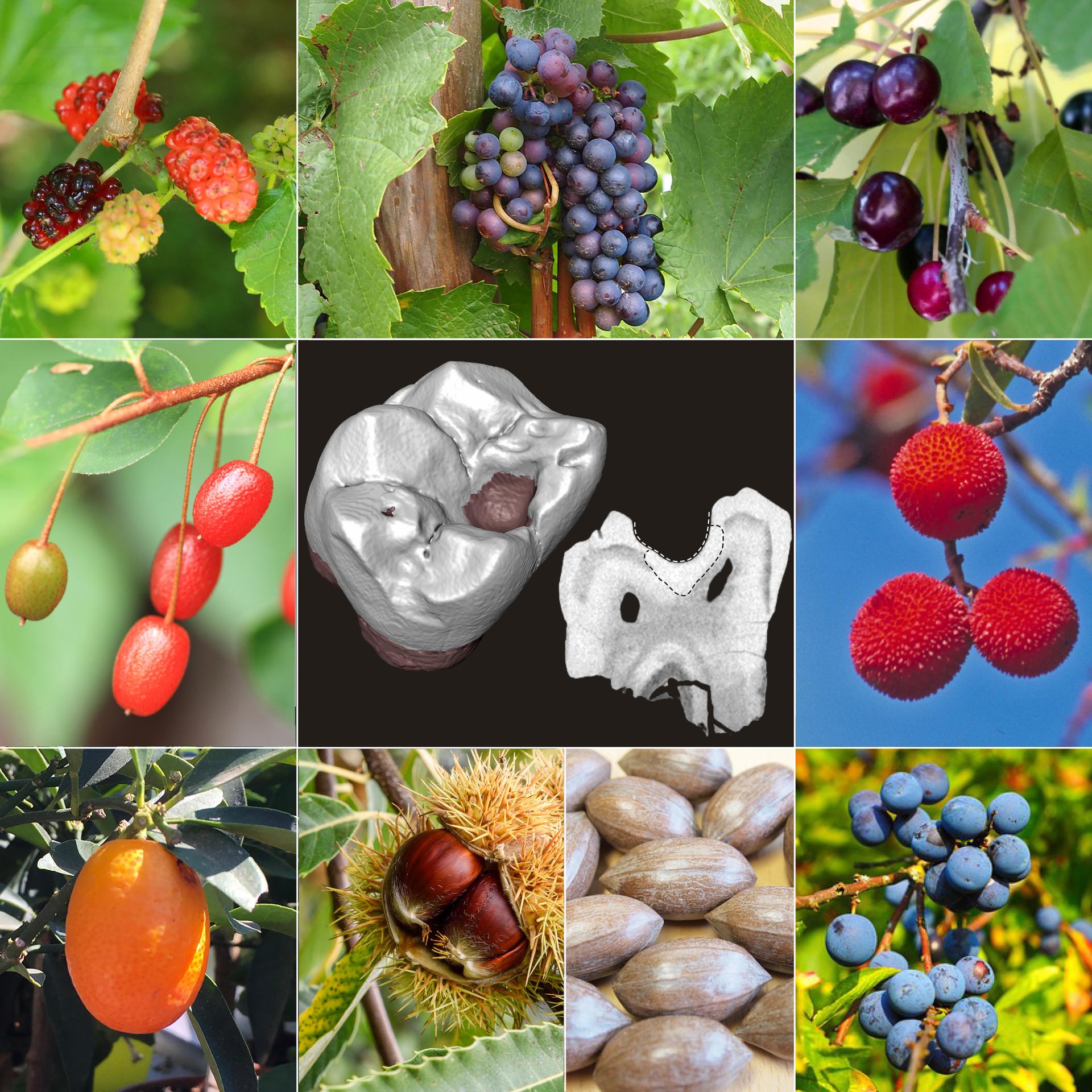News
30.08.2018
Our ancestors started getting fat 12.5 m years ago
University of Tübingen researchers find the evolutionary cause of “lifestyle diseases”

Many of today’s lifestyle diseases may have their origin in a genetic mutation linked with high sugar intake and the storage of fat reserves, which first occurred in our ancestors many millions of years ago. Diabetes, high blood pressure, obesity and gout are diseases which according to the World Health Organization not only claim millions of human lives each year – they also occur in our nearest relatives, the orangutan, gorilla and chimpanzee. For about ten years researchers have suspected that the human predisposition to what we call “lifestyle diseases” may be due to our common evolutionary history. Unlike other primates, we, gorillas, orangutans and chimps lack the enzyme uricase in our metabolism. This leads to higher levels of uric acid in the blood, and sugars are transformed into body fat. Fructose (unlike glucose) increases this fat storage effect. Under the uricase theory, the genetic mutation leading to its loss must have occurred in our last common ancestor with chimps, gorillas and orangutans – 15 million years ago in what is now Europe.
Tübingen and Dresden researchers have now come up with paleontological evidence supporting this theory. Their team includes Professor Madelaine Böhme and Jochen Fuss of the University of Tübingen and the Senckenberg Centre for Human Evolution and Palaeoenvironment, and Gregor Uhlig of the Helmholtz Center Dresden-Rossendorf. The team found advanced tooth decay in the 12.5 million year old teeth of Dryopithecus carinthiacus, the earliest representative of African apes and humans. The teeth were found in Carinthia, Austria, in 1953. “This finding was a surprise to us, because the rise of tooth decay has always been placed in the context of early agriculture – the Neolithic revolution – some ten thousand years ago. We have been eating more cooked starches since then,” says Madelaine Böhme, who headed the study. A comprehensive comparative study of the state of the teeth of 365 wild chimpanzees in Liberia showed that only 0.17 percent of them had signs of tooth decay. “The tooth decay observed in chimpanzees is also much less pronounced than in the fossil primate,” Jochen Fuss adds.
Sweet tooth
But unlike the tooth rot often found in early farmers, the decay in the Dryopithecus carinthiacus teeth was due to high levels of sugar consumption. To prove this, the researchers analyzed the fossil pollen from trees, bushes and vines present in the layers of the site in Carinthia where the 12.5 million year old jawbone was found. There they found at least nine species with high-sugar fruits, including grapes, mulberries, strawberry trees, chestnuts, oleaster, and types of wild cherry and plum. The scientists also found 46 melliferous plants – so honey could have been an additional source of sugar. According to the study, sugar was present for nine to ten months of the year, from March to December, in the Miocene landscape of what is now Carinthia. While today’s primates can eat young leaves if no fruit is available, the European primates did not have that emergency option. “Because of the low light intensity, or the short hours of daylight in January and February, and despite nearly tropical temperatures in the northern mid-latitudes, there was no new leaf growth in late winter,” Böhme explains. Chemist Gregor Uhlig adds: “To survive this starvation period, our ancestors had to put on reserves of fat.”
Padding for the winter
The team found that the fruits likely consumed by Dryopithecus at the end of the growth period in early winter from November to December had a high sugar and especially fructose content. This in turn led to the formation of body fat due to the lack of uricase in the metabolism. The conclusion that European great apes had substantial fat reserves was confirmed by the only complete skeleton known to date - that of the eight million year old Oreopithecus bamboli found in Tuscany. In its preserved soft tissue there were closely-packed fat cells, similar in size and shape to those of modern humans.“Many clinical studies have shown that high levels of uric acid in the blood lead to high blood pressure,” Böhme says. According to the uricase theory, stable higher blood pressure could have been, along with fat reserves, an important selective advantage for apes in Miocene Europe because these conditions enable physical activity even when food is scarce. “A mutation which happened millions of years ago is largely responsible for early great apes being able to settle Eurasia and to produce an enormous diversity of species,” Böhme concludes. “We carry that legacy within us. But this advantage has turned into a handicap for us in a world of industrially-produced foodstuffs.”
Publication
Fuss, J., Uhlig, G., Böhme, M: Earliest evidence of caries lesion in hominids reveal sugar-rich diet for a Middle Miocene dryopithecine from Europe". PLOS ONE, http://journals.plos.org/plosone/article?id=10.1371/journal.pone.0203307
Contact
Professor Dr. Madelaine Böhme
University of Tübingen
Senckenberg Centre for Human Evolution and Palaeoenvironment
Phone +49 7071 29-73191
m.boehmespam prevention@ifg.uni-tuebingen.de
Contact for Press
Eberhard Karls Universität Tübingen
Public Relations Department
Dr. Karl Guido Rijkhoek
Director
Janna Eberhardt
Research Reporter
Phone +49 7071 29-76753
Fax +49 7071 29-5566
janna.eberhardtspam prevention@uni-tuebingen.de
http://www.uni-tuebingen.de/universitaet/aktuelles-und-publikationen.html
